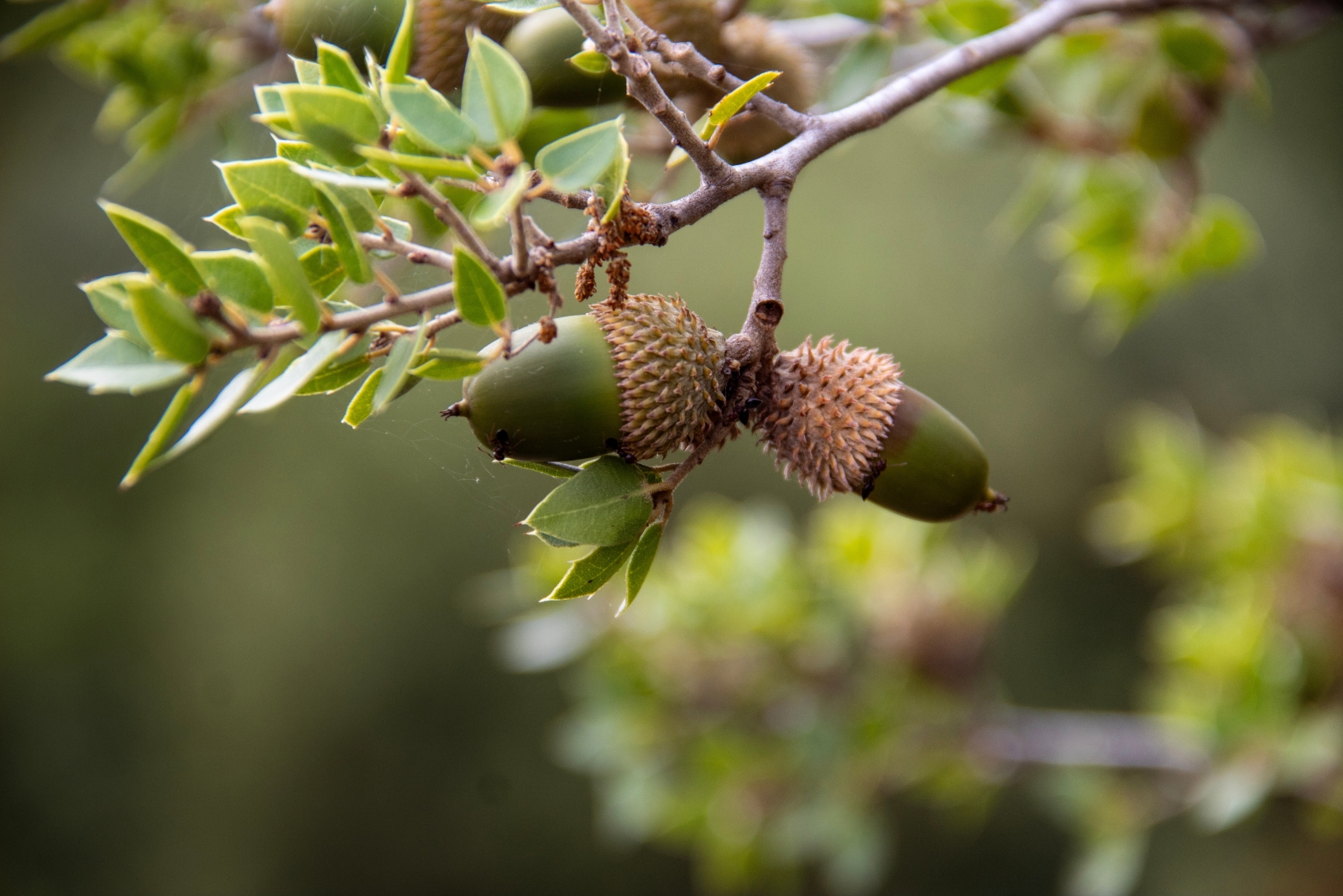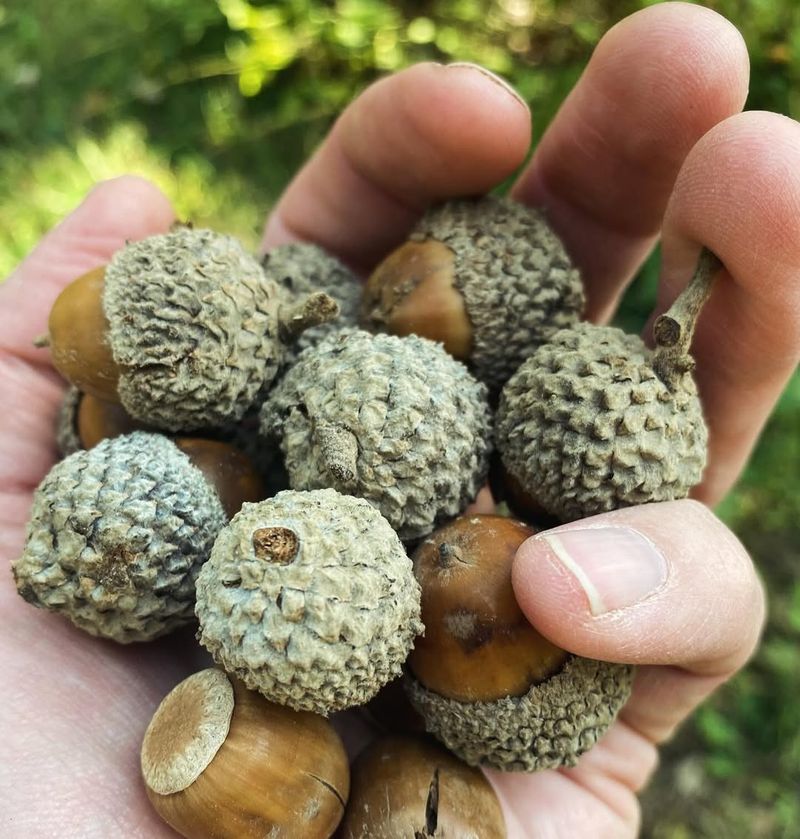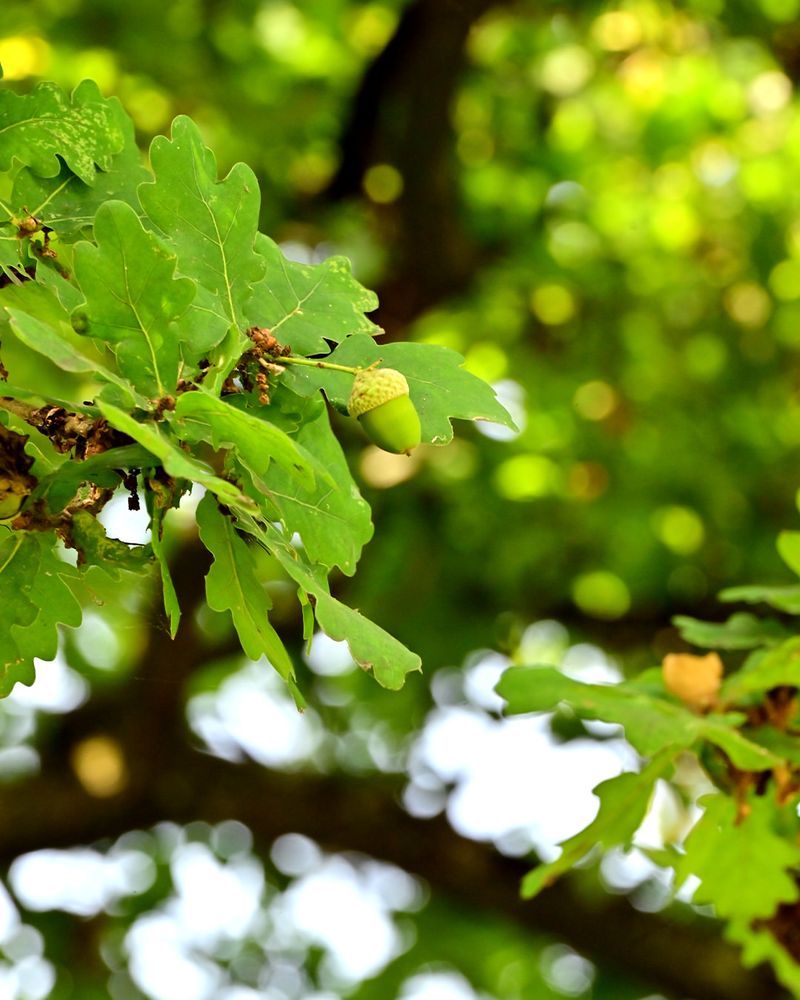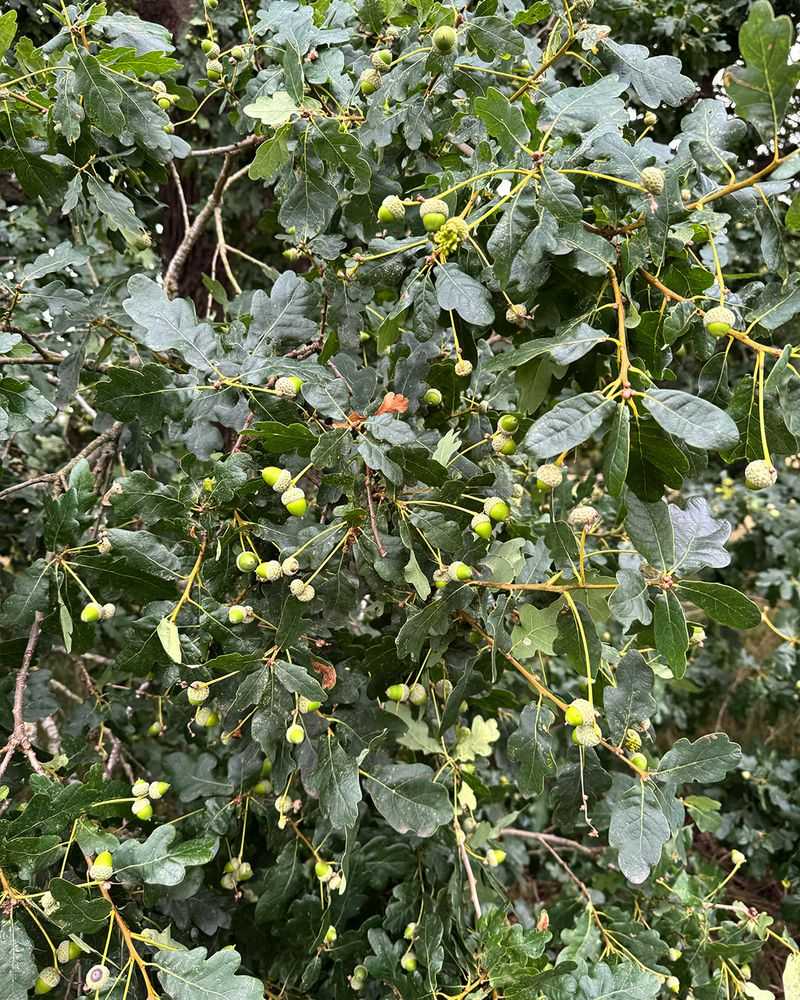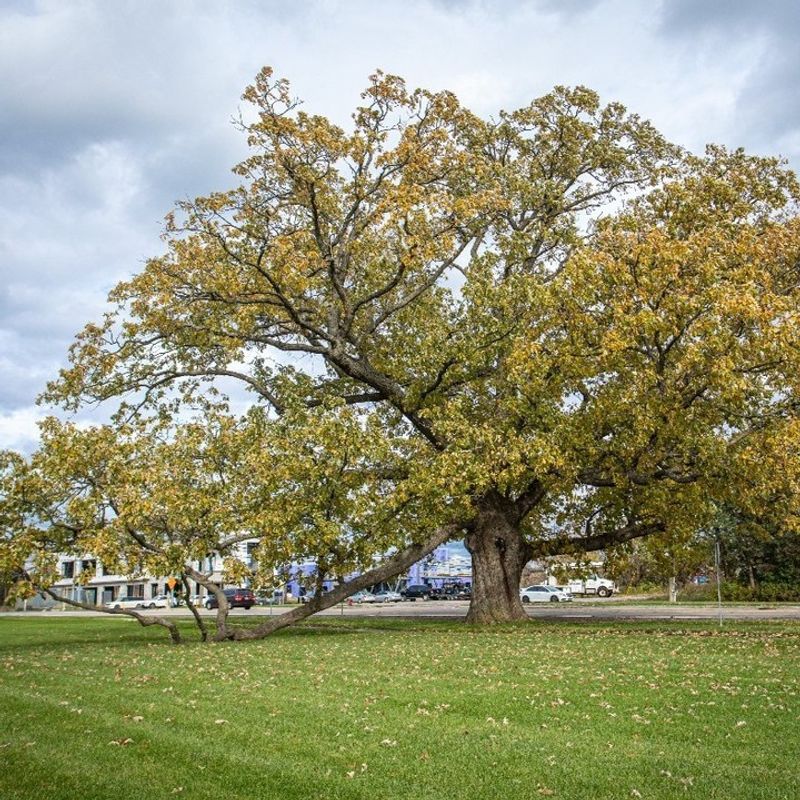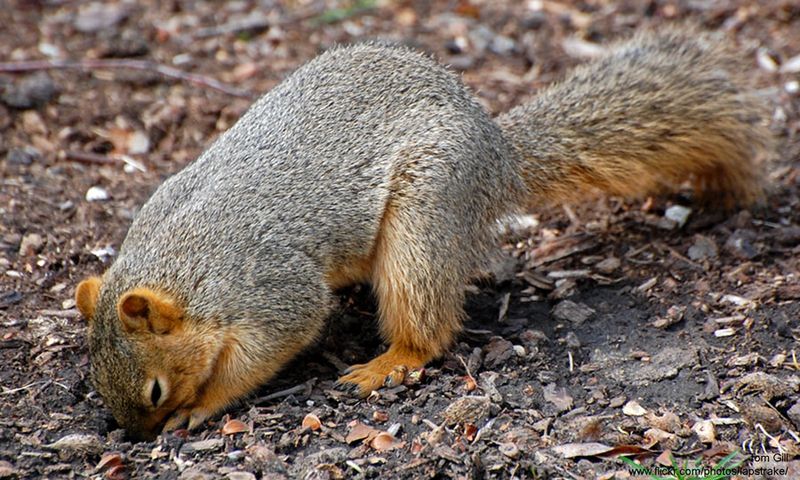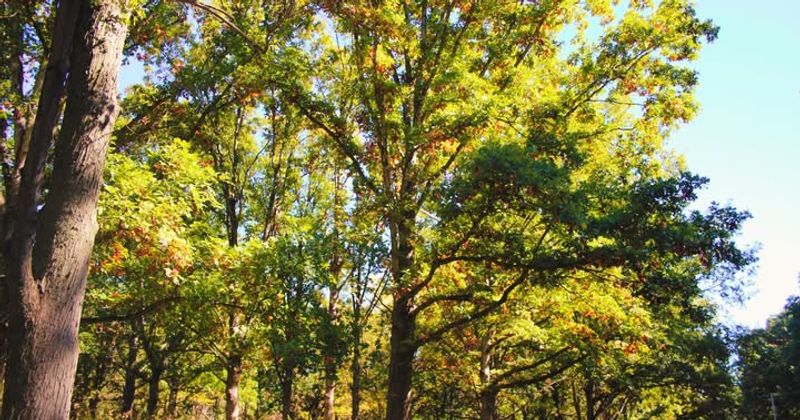Acorns seem almost everywhere in Illinois this year. Lawns hold thick layers, gutters fill fast, and squirrels act as if they just won a prize. Homeowners pause, curious about the sudden surge. This season did not arrive by chance.
Weather patterns, oak maturity, and natural cycles all aligned in a perfect mix. The result feels impossible to miss.
1. Mast Year Phenomenon
Oak trees follow a natural cycle called a mast year, where they produce an enormous amount of acorns all at once. Scientists believe trees coordinate this effort to overwhelm predators like squirrels and deer, ensuring some acorns survive to grow into new trees.
Mast years typically happen every two to five years, depending on the oak species. When conditions align perfectly with weather, nutrients, and tree health, Illinois oaks go into overdrive. Your overflowing gutters and crunchy driveway are actually signs of a successful natural strategy that’s been working for thousands of years.
2. Perfect Spring Weather Conditions
Spring weather plays a massive role in acorn production. Oak trees pollinate through wind, and calm, dry conditions during late April and early May create ideal circumstances for pollen to travel successfully between trees.
Illinois experienced particularly favorable spring conditions this year. Minimal rain during pollination meant more pollen reached female flowers, resulting in higher fertilization rates. Warm temperatures also boosted tree energy, allowing oaks to invest more resources into developing acorns. Nature’s timing worked out beautifully, leading to the bumper crop homeowners are dealing with now.
3. Abundant Rainfall During Summer
After pollination, developing acorns need plenty of water to grow properly. Summer 2024 brought consistent rainfall across much of Illinois, providing oak trees with the moisture they desperately needed.
Well-watered trees produce larger, healthier acorns in greater numbers. Drought conditions typically cause trees to abort developing acorns to conserve energy, but this year’s steady precipitation eliminated that stress. The combination of spring pollination success and summer hydration created perfect conditions. Your yard’s acorn explosion is essentially a report card showing how well Illinois weather supported oak tree reproduction this growing season.
4. Tree Stress Response
Believe it or not, stress can actually trigger trees to produce more acorns. When oaks sense potential threats like disease, insect damage, or environmental changes, they sometimes respond by reproducing heavily.
Think of it as the tree’s survival instinct kicking in. If an oak thinks its days might be numbered, it works overtime to create the next generation before it’s too late. Recent years have brought challenges like emerging oak diseases and climate fluctuations to Illinois. Some of those extra acorns littering your property might represent trees working hard to ensure their genetic legacy continues, even if they’re facing uncertain futures.
5. Nutrient-Rich Soil Conditions
Oak trees need proper nutrition to fuel massive acorn production. Soil rich in nitrogen, phosphorus, and potassium provides the building blocks trees require to create thousands of acorns.
Years of fallen leaves decomposing beneath Illinois oaks have created nutrient-dense soil in many areas. Additionally, homeowners who fertilize their lawns may inadvertently be feeding nearby oak trees, boosting their reproductive capabilities. When trees have access to abundant nutrients combined with favorable weather, they can afford the enormous energy expense of a heavy acorn crop. Your lawn care efforts might be contributing to your acorn cleanup challenges in unexpected ways.
6. Mature Tree Population
Age matters when it comes to acorn production. Young oak trees produce relatively few acorns, but mature trees between 50 and 80 years old hit their reproductive prime.
Many Illinois neighborhoods were developed decades ago with oak trees planted as saplings. Those trees are now reaching peak acorn-producing age all at once. Established communities with older tree canopies naturally experience heavier acorn drops than newer subdivisions. If your neighborhood was built in the 1960s or 1970s, your oaks are probably mature enough to create serious acorn volume, especially during a mast year when conditions align perfectly for reproduction.
7. Reduced Squirrel Predation
Squirrels typically consume enormous quantities of acorns, but population fluctuations affect how many nuts survive. When squirrel numbers are lower, more acorns remain visible on the ground.
Some Illinois areas have experienced reduced squirrel populations due to harsh winters, food shortages in previous years, or predator activity. With fewer squirrels around to harvest and bury acorns, homeowners notice the abundance more dramatically. Additionally, during mast years, trees produce so many acorns that even healthy squirrel populations can’t keep up. The combination creates the perfect storm of acorn overload that’s overwhelming yards, driveways, and gutters across the state this season.
8. Climate Pattern Synchronization
Oak trees across wide regions can synchronize their mast years based on shared climate patterns. When weather conditions favor reproduction across Illinois, trees respond collectively rather than individually.
Recent climate data shows that temperature and precipitation patterns have been remarkably consistent statewide this year. This widespread synchronization means communities from Chicago suburbs to rural central Illinois are all experiencing heavy acorn drops simultaneously. Scientists believe trees may communicate through chemical signals or simply respond to identical environmental cues. Whatever the mechanism, Illinois oaks decided together that conditions were right, resulting in the coordinated acorn avalanche homeowners are experiencing everywhere this fall.

